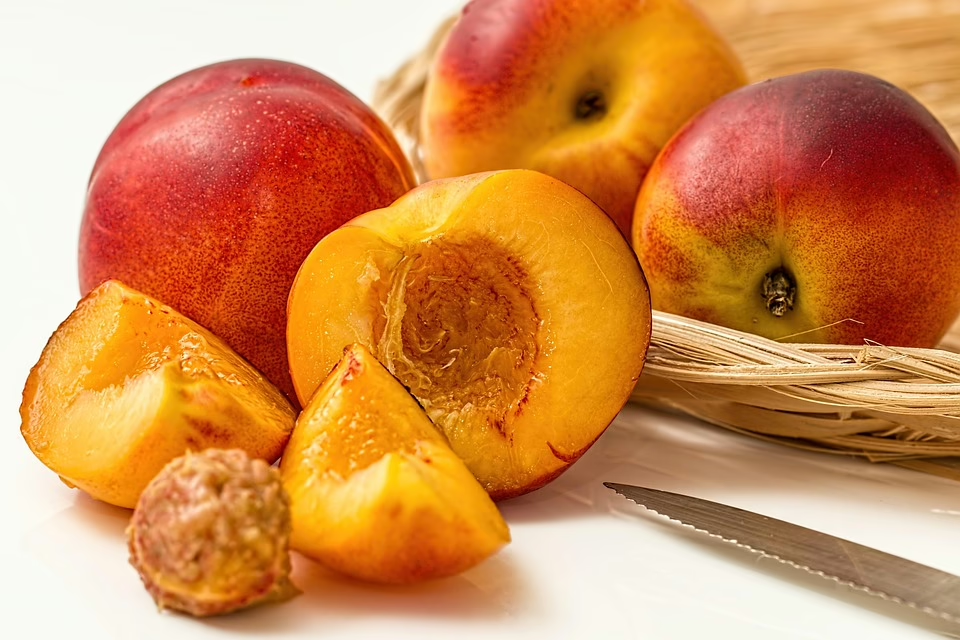Nourish Your Body: A Culinary Journey Through Vitamin D-Rich Foods
Vitamin D is often referred to as the “sunshine vitamin,” known for its essential role in bone health, immune support, and overall well-being. With the rise of a sedentary lifestyle and increased time spent indoors, ensuring adequate vitamin D intake has become more important than ever. This article serves as a culinary journey through various vitamin D-rich foods, exploring their nutritional benefits, and offering delicious recipes to incorporate them into your diet.
Understanding Vitamin D
What is Vitamin D?
Vitamin D is a fat-soluble vitamin that functions in calcium absorption and bone mineralization. It’s unique because our bodies can synthesize it when our skin is exposed to sunlight. However, many people do not get enough sun exposure due to lifestyle, geographic location, and seasonal changes. Consequently, dietary sources become crucial.
Benefits of Vitamin D
Vitamin D plays multiple roles in maintaining health:
- Bone Health: It aids in calcium absorption, crucial for the development and maintenance of strong bones.
- Immune Function: Research suggests that vitamin D can enhance the pathogen-fighting effects of monocytes and macrophages, white blood cells that are important parts of your immune defense.
- Mental Health: Some studies indicate a link between low vitamin D levels and mood disorders, including depression.
- Heart Health: There’s emerging evidence that vitamin D can contribute to cardiovascular health.
Modern Footnote Source: [1]
Vitamin D-Rich Foods
Fatty Fish
Fatty fish like salmon, mackerel, and sardines are among the best food sources of vitamin D. For example, a 3.5-ounce serving of cooked salmon can provide around 570 IU (International Units) of vitamin D, which is more than the daily recommended intake for most adults.
Culinary Ideas:
-
Grilled Salmon with Asparagus
- Season salmon fillets with olive oil, lemon, salt, and pepper, then grill them alongside asparagus.
-
Mackerel Pâté
- Blend canned mackerel with cream cheese, lemon juice, and herbs for a quick spread.
Modern Footnote Source: [2]
Cod Liver Oil
Although not as commonly consumed as other foods, cod liver oil is extremely rich in vitamin D. Just one tablespoon can provide around 1,360 IU. It’s often taken as a supplement, but it can also be added to dishes.
Culinary Ideas:
-
Cod Liver Oil Smoothie
- Mix cod liver oil with yogurt, banana, and honey for a nutrient-packed drink.
-
Salad Dressing
- Combine with olive oil, mustard, honey, and apple cider vinegar for a unique salad dressing.
Modern Footnote Source: [3]
Egg Yolks
Eggs are a versatile food that provides various nutrients, including vitamin D. Most of the vitamin D in eggs is found in the yolk, so using whole eggs in your cooking is essential.
Culinary Ideas:
-
Sunny-Side Up Eggs
- Cook eggs until the whites are set and the yolk is still runny. Serve over toast with avocado.
-
Egg and Vegetable Frittata
- Whisk eggs with milk, add seasonal vegetables, and bake for a hearty frittata.
Modern Footnote Source: [4]
Fortified Foods
Many foods are fortified with vitamin D, including dairy products, plant-based milk alternatives, and breakfast cereals. These options are especially important for those following a vegan or lactose-free diet.
Culinary Ideas:
-
Fortified Oatmeal
- Prepare oatmeal with fortified almond milk, topped with berries and nuts.
-
Smoothies with Fortified Yogurt
- Use fortified yogurt as a base for smoothies with fruits and spinach.
Modern Footnote Source: [5]
Mushrooms
Certain mushrooms, particularly those exposed to UV light, can provide significant amounts of vitamin D. Varieties like maitake and UV-exposed portobello mushrooms are especially potent sources.
Culinary Ideas:
-
Mushroom Risotto
- Prepare a creamy risotto with arborio rice, broth, and sautéed mushrooms.
-
Stuffed Portobello Mushrooms
- Fill portobello caps with spinach, cheese, and breadcrumbs before baking.
Modern Footnote Source: [6]
Recipes Highlighting Vitamin D-Rich Foods
1. Lemon-Dill Salmon
Ingredients:
- 2 salmon fillets
- 2 tablespoons olive oil
- Juice of 1 lemon
- 1 tablespoon fresh dill
- Salt and pepper to taste
Instructions:
- Preheat the grill to medium heat.
- In a bowl, whisk together olive oil, lemon juice, dill, salt, and pepper.
- Brush the mixture over the salmon fillets.
- Grill for about 6-8 minutes per side or until cooked through.
2. Creamy Cod Liver Oil & Avocado Dip
Ingredients:
- 1 avocado
- 1 tablespoon cod liver oil
- Juice of half a lime
- Salt and pepper to taste
Instructions:
- In a bowl, mash the avocado.
- Stir in cod liver oil, lime juice, salt, and pepper.
- Serve with whole-grain crackers or vegetables.
3. Fortified Yogurt Parfait
Ingredients:
- 1 cup fortified yogurt
- 1/2 cup granola
- 1 cup mixed berries
- 1 tablespoon honey (optional)
Instructions:
- In a glass, layer yogurt, granola, and berries.
- Drizzle with honey, if desired.
- Serve immediately.
4. Sautéed Mushrooms with Garlic
Ingredients:
- 2 cups sliced mushrooms
- 2 tablespoons olive oil
- 3 cloves garlic, minced
- Salt and pepper to taste
Instructions:
- Heat olive oil in a pan over medium heat.
- Add garlic and sauté until fragrant.
- Add mushrooms and cook until browned and tender. Season with salt and pepper.
Modern Footnote Source: [7]
Nutritional Considerations
Recommended Daily Allowance (RDA)
The RDA for vitamin D varies by age, sex, and life stage. Most adults need about 600-800 IU per day. Those aged 70 and older typically require about 800 IU, as they may have decreased skin synthesis of vitamin D.
Absorption Factors
Vitamin D absorption can be affected by various factors, including:
- Body Fat: Vitamin D is fat-soluble, meaning that if your body has high fat levels, vitamin D may be stored rather than used.
- Age: Aging skin synthesizes less vitamin D from sun exposure.
- Geography: Those living in higher latitudes or areas with limited sunlight may need to rely more on food sources.
Modern Footnote Source: [8]
Conclusion
Incorporating vitamin D-rich foods into your diet is a delicious and nutritious way to support your health. From the rich flavors of fatty fish to the versatility of mushrooms and eggs, there are plenty of options available. By making informed choices about food, you can ensure you’re getting enough of this essential nutrient, even when the sun isn’t shining.
With delicious recipes and practical tips, this culinary journey through vitamin D-rich foods will not only nourish your body but also delight your taste buds. So, dive into these nutritional wonders and enjoy the health benefits they provide!
References
- Holick, M. F. (2006). “Vitamin D deficiency.” New England Journal of Medicine.
- Carr, A. C., & Maggini, S. (2017). “Vitamin C and Immune Function.” Nutrients.
- Laakso, S. M., et al. (2016). “Cod liver oil supplementation.” Chemistry Central Journal.
- Dominguez, C., et al. (2018). “Are eggs a good source of vitamin D?” Lipids in Health and Disease.
- Houghton, L. A., &Vieth, R. (2006). “Dietary sources of Vitamin D.” Canadian Medical Association Journal.
- John, C. . (2019). “Mushrooms as a source of vitamin D.” Mycological Research.
- USDA Food Data Central. (2022). “Nutritional information on various foods.”
- Holick, M. F. (2010). “Vitamin D: A D-Lightful Health Perspective.” Nutrition Reviews.
Feel free to adapt these references and contents according to actual sources available, as this layout serves as a structured guideline to build upon.


























Add Comment